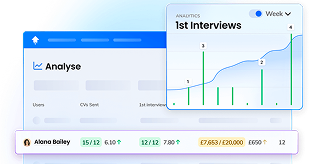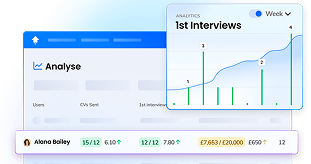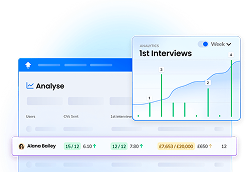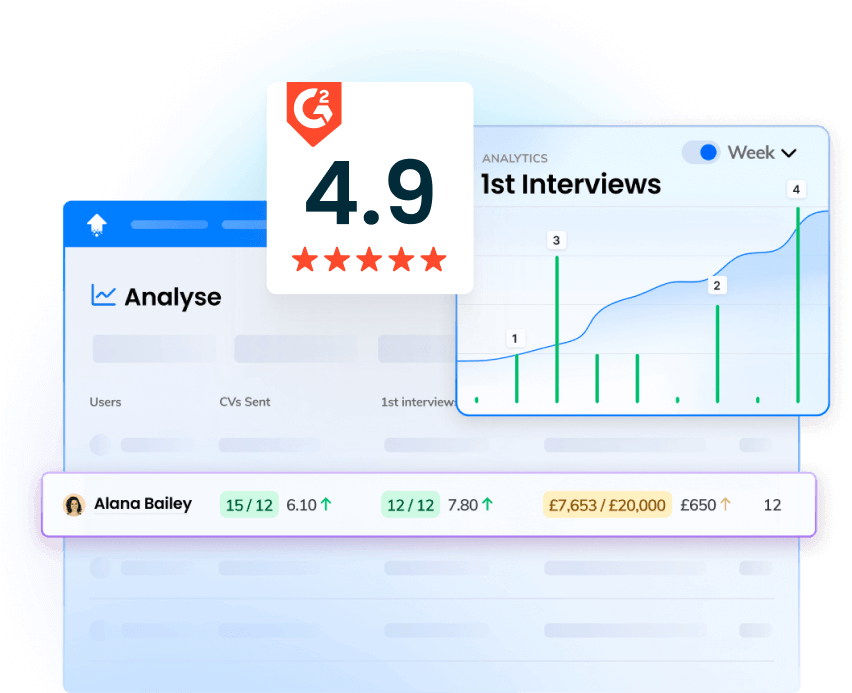Just as things were starting to stabilize after three wild years, the cost-of-living crisis and new AI tools came along and shook things up again. It feels more crucial than ever to get the big decisions right.
With decisions feeling weighty, what’s the answer? Well, no decision guarantees success but recruiters are learning from tech companies to make more data-driven decisions. There are too many factors at play to rely on intuition alone. So, many have revamped their business development (BD) mindset with data-driven decisions at the core.
What is data-driven decision-making?
Data-driven decision-making (DDDM) is using data, metrics and facts to influence your decisions. Tech giants like Google, Amazon, and Facebook grew at astonishing rates due to data-driven decisions. So now, other industries are taking notice.
The advantages of DDDM:
- Eliminate cognitive biases.
- Test ideas before implementing them.
- Discover which products/services demand priority.
- Quickly adapt to market changes.
- Gain a better understanding of how products/services are received by customers.
- Make decisions more confidently.
Making Data-Driven Decisions in Recruitment
Some recruiters found it uncomfortable working remotely in 2020. As they weren’t walking around the office speaking to people, they felt out of the loop – losing track of how effective they were. This was the ‘lightbulb moment’ for many that highlighted the need to pay more attention to data to see how effective their agency is.
Thankfully, the data that benefits recruiters isn’t too hard to secure. Most of the tools you’re already using each day can track data for you. It’s a case of knowing what to look for, using the right tools, maintaining great relationships, and making time to review your data.
Where to Secure Valuable Data at your Recruitment Agency
1. Client Feedback
Clients won’t always tell you if they’re unhappy. Some will leave and find another agency if they’re not impressed and don’t believe you can turn things around. So, collecting client feedback regularly is essential to learn how your service is being received.
Even if clients have been with you for a long time and seem happy, checking in with them using tools like SurveyMonkey, Typeform, and AskNicely will help you spot opportunities for improvement.
Gain client feedback to assess:
- Candidate quality and fit – are your placements a good fit for the client?
- Meeting clients’ needs – is your service meeting the unique needs of your clients?
- Timeliness – are things taking too long to get done?
- Customer service – placements aside, overall, do clients feel taken care of?
- Areas for improvement – what areas of your process are frustrating clients?
- Patterns – was a positive/negative comment a one-off or is this something that you’ve heard before?
- Net promoter scores (NPS) – this is a simple way to measure customer loyalty and satisfaction. It’s based on one simple question: How likely is it that you would recommend our [product/service/company] to a friend/colleague? Learn how to track your NPS score.
2. Social Media Analytics
Some treat social media as a ‘box to tick’, whereas others take it seriously as they know the juice is worth the squeeze. The better your output, the more value you can extract from the data.
Social media data for recruiters to review:
- Candidate sourcing insights – keywords, hashtags, skills, interests, background, location, etc. assessing these and spotting patterns makes it easy to find the right people in the future.
- Candidate networks – making new connections can lead you to find other valuable connections in their network, opening the door for potential referrals or job opportunities in the future.
- Platform engagement – X, Instagram, LinkedIn, TikTok – the number of platforms can be overwhelming! Checking your engagement rates for job postings, company pages, and recruitment pages reveals which platforms are the most effective. Apply your findings to your social media strategy to get better results.
- Content engagement – click-through rates, likes, and shares will reveal which topics are resonating the most with your audience, helping you lean into these areas further to create more engagement and applications.
- Cost-effectiveness – assess the cost-of-hire and ROI of social media recruitment to assess which campaigns are the most effective.
3. Sales Productivity Tools
Lots of agencies thrived despite the difficulties that followed COVID-19. In our 2023 Hiring Hustle Report, we mentioned that many clients told us that 2021 and 2022 were ‘golden years’ in the recruitment world.
How was that possible? In a nutshell, the ones thriving had motivated teams focusing on improving the metrics that make them more effective.
Being effective is the key. Because two common data problems cost recruiters: they don’t pay much attention to data, or they do but they focus on misleading metrics. For instance, you may notice that you’ve booked more interviews in one quarter or your job ads are getting more applications. While these are good signs, boosting these metrics alone won’t equal more sales…
A rise in interviews means you’re being more productive, not effective. How many of those interviews resulted in placements? An interview-to-placement metric would be a better one to focus on improving.
Effective metrics for recruiters to monitor:
- Time-to-hire: from creating a new job opening to the hire, how long does it take?
- Cost-per-hire: what’s the total amount of money you spend when hiring? Advertising, candidate sourcing, etc. what’s the total cost?
- Source of hire: which channels produce the best hires?
- Candidate quality: are candidates’ skills, qualifications, and experience a good match for the positions you’re looking to fill?
- Retention rate: how long are placements staying at the roles you place them in?
- Client satisfaction scores: overall, how do clients rate your agency?
DDDM is no longer a tool exclusively used by flashy startups in Silicon Valley. The data that you need to excel is straightforward to obtain and track. Once you’ve chosen your tools, identified your success metrics, and built time into your schedules to review the data – decision-making becomes much easier. But more importantly, better results await you.




















